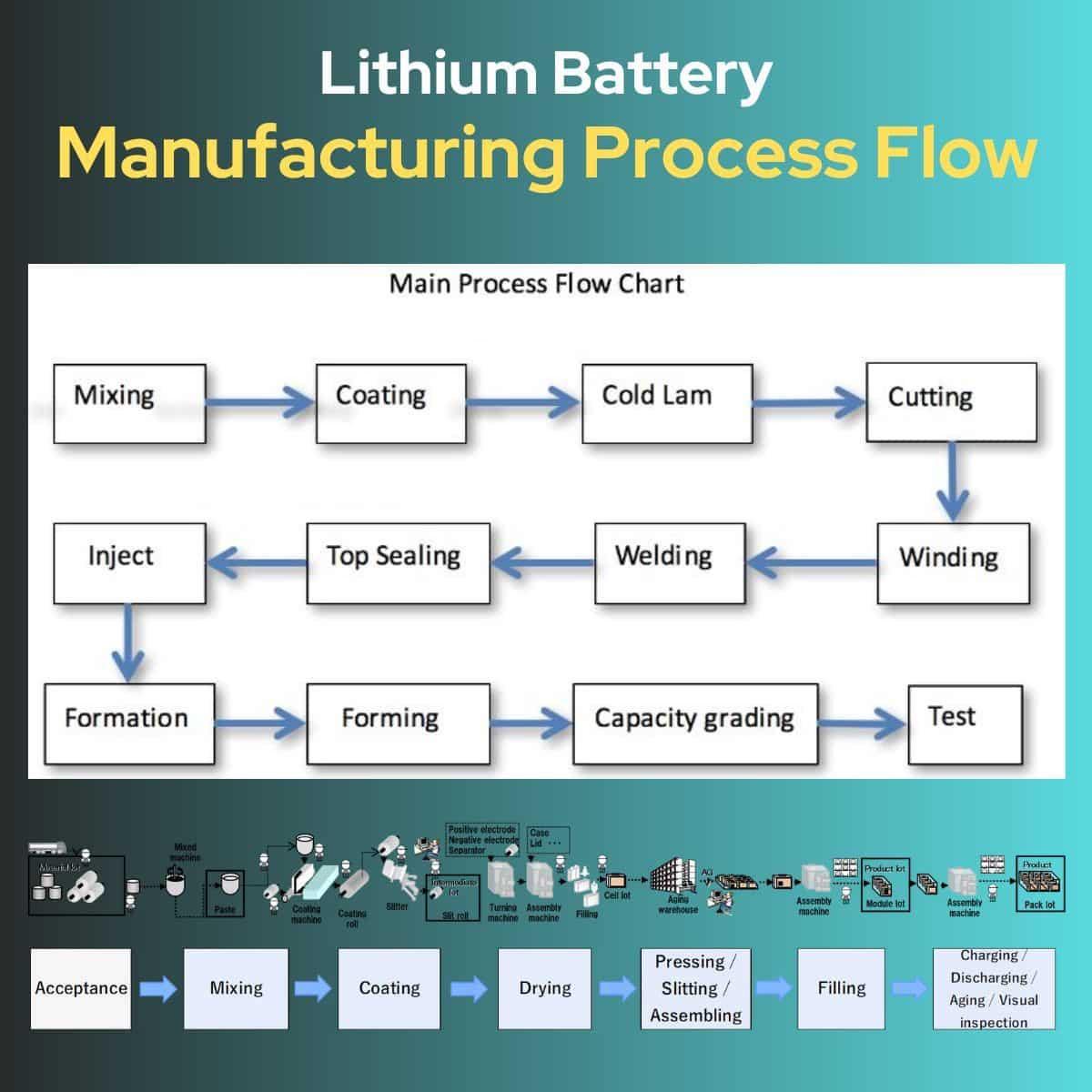🔋 Exploring the Journey of a Lithium-Ion Battery Manufacturing: Process Flow.
Lithium-ion battery from raw materials to powering our devices and vehicles?

Battery Manufacturing
1️⃣ Raw Material Extraction and Processing: Lithium-ion batteries start with the extraction of key materials like lithium, cobalt, nickel, and graphite from mines or mineral sources. These raw materials undergo refining and processing to meet the required purity standards.
2️⃣ Cathode and Anode Material Production: The processed materials are then transformed into cathode and anode components.
3️⃣ Electrode Coating: Thin layers of cathode and anode materials are coated onto aluminum and copper foils, respectively. This process ensures uniform distribution and maximizes the battery’s performance.
4️⃣ Separator Preparation: A separator, often made of a porous polymer, is placed between the cathode and anode to prevent electrical contact and facilitate ion transport within the battery.
5️⃣ Cell Assembly: Cathodes, anodes, and separators are assembled into individual cells, and an electrolyte is introduced to promote ion movement and facilitate charging and discharging.
6️⃣ Formation and Aging: The cells undergo a formation process, where they are charged and discharged multiple times to stabilize their performance and capacity. Aging tests are also conducted to assess long-term reliability.
7️⃣ Battery Pack Manufacturing: Cells are grouped and connected in series or parallel to create battery packs with the desired voltage and capacity. These packs are assembled with management systems for optimal performance and safety.
8️⃣ Quality Testing and Verification: Rigorous quality tests are conducted to ensure the batteries meet safety, efficiency, and performance standards. This includes various electrical, thermal, and mechanical tests.
9️⃣ Packaging and Distribution: The approved battery packs are then packaged and distributed to various industries, including automotive, consumer electronics, and energy storage, where they power a wide array of devices and applications.
Learn more: www.ssntm.com
Lithium-ion batteries have revolutionized our lives, enabling clean energy solutions and powering the future of transportation and technology. Stay tuned for more insights into the world of battery technology!

